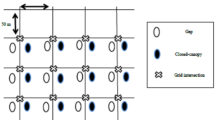Abstract
Seedling recruitment and survivorship of beech (Fagus crenata) were studied with special reference to the simultaneous death of undergrowing bamboo (Sasa kurilensis). The survival rate of beech seedlings on the floor whereSasa had withered was much higher than that on the floor whereSasa survived. Damping off caused the largest mortality among beech seedlings. However, the allocation pattern of matter to different parts of the seedlings indicated that their survival was greatly affected by production economy. The dense cover of dwarf bamboo prevented the establishment of beech seedling banks on the forest floor. The interval between the times when simultaneous death ofSasa occur and the length of its recovery period are thus important factors controlling the dynamics of beech forests in Japan.
Similar content being viewed by others
References
Auguspurger, C. K. (1983) Offspring recruitment around tropical trees: change in cohort distance with time. Oikos40: 189–196.
Chim, L. T. &On, W. F. (1973) Density, recruitment, mortality and growth of Dipterocarp seedlings in virgin and logged-over forest in Sabah. Malaysian Forester36: 3–15.
Christy, E. J. &Mack, R. N. (1984) Variation in demography of juvenileTsuga heterophylla across the substratum mosaic. J. Ecol.72: 75–91.
Grime, J. P. (1978) Plant strategies & vegetation processes. 222 pp. John Wiley & Sons, New York.
Hashizume, H. &Noguchi, K. (1977) Studies on the process of formation of beech forest (III). Regeneration and growth of natural seedling in beech forest. Bull. Tottori Univ. For.10: 31–49 (In Japanese with English summary).
Hett, J. M. (1971) A dynamic analysis of age in sugar maple seedlings. Ecology52: 1071–1074.
Hibbs, D. E. (1979) The age structure of a stripped maple population. Can. J. For. Res.9: 504–508.
Howe, H. F., Schupp, E. W. &Westley, L. C. (1985) Early consequences of seed dispersal for a neotropical tree (Virola surinamensis). Ecology66: 781–791.
Maeda, T. &Miyakawa, K. (1971) New techniques for natural regeneration of beech. “New techniques for natural regeneration”, 179–252. Sobun, Tokyo (In Japanese).
Maguire, D. A. &Forman, R. T. T. (1983) Herb cover effects on tree seedling patterns in a nature hemlock-hardwood forest. Ecology64: 1367–1380.
Muroi, H. (1968) Flowering ofSasa kurilensis in Mt. Hyono-yama. Rep. Fuji Bamboo Garden13: 90–106 (In Japanese).
Nakashizuka, T. (1983) Regeneration process of climax beech (Fagus crenata Blume) forests III. Structure and development processes of sapling populations in different aged gaps. Jap. J. Ecol.34: 75–85.
— (1984) Regeneration process of climax beech (Fagus crenata Blume) forests IV. Gap formation. Jap. J. Ecol.34: 75–85.
— (1987) Regeneration dynamics of beech forests in Japan. Vegetatio69: 169–176.
— &Numata, M. (1982) Regeneration process of climax beech forests I. Structure of a beech forest with the undergrowth ofSasa. Jap. J. Ecol.32: 57–67.
Numata, M. (1970) Conservation implications of bamboo flowering and death in Japan. Biol. Conserv.2: 227–229.
Okamura, H. &Tanaka, Y. (1979) The flowering and seedling ecology ofSasa tsuboiana Makino at Mt. Hira. Rep. Fuji Bamboo Garden23: 68–77 (In Japanese).
Sakurai, S. (1984) The state of recovery and the biomass ofSasa ishizuchiana Makino in Mt. Kamegamori ten years after death by flowering. Bamboo J. Tokyo2: 16–20 (In Japanese).
Sasaki, Y. (1973) Communities in the cool-temperate zone. “Phytosociology” (ed. Sasaki, Y.), 22–33 Kyoritsu, Tokyo (In Japanese).
Shidei, T. (1974) Forest vegetation zones. “The flora and vegetation of Japan” (ed. Numata, M.), 87–124. Copub. Kodansha, Tokyo and Elsevieer Scientific, Amsterdam.
Silander, J. A. (1983) Demographic variation in the Australian desert cassia under grazing pressure. Occologia60: 227–233.
Skeen, J. N. (1976) Regeneration and survival of woody species in a naturally-created forest opening. Bull. Torrey Bot. Club103: 259–265.
Tagawa, H. (1979) An investigation of initial regeneration in an evergreen broadleaved forest II. Seedfall, seedling production, survival and age distribution of seedlings. Bull. Yokohama Phytosociol. Soc. Jap.16: 379–391.
Uchimura, E. (1974) Flowering ofSasa kurilensis Makino et Shib. in Nagano Pref. Rep. Fuji Bamboo Garden19: 33–38 (In Japanese).
Veblen, T. T. (1982) Growth pattern ofChusquea bamboos in the understory of ChileanNothofagus forests and their influences in forest dynamics. Bull. Torrey Bot. Club109: 474–487.
—,Schlegel, F. M. &Escobar, R. B. (1980) Structure and dynamics of old-growthNothofagus forests in the Valdivian Andes, Chile. J. Ecol.68: 1–31.
Wyatt-Smith, J. (1958) Seedling/sapling survival ofShorea leprosula, Shorea parvifolia andKoompassia malaccensis. Malayan Forester21: 185–192.
Yamamoto, S. (1966) On the flowering ofSasa in western Shikoku. Rep. Fuji Bamboo Garden11: 199–209 (In Japanese).
Yamamoto, S. &Tsutsumi, T. (1985a) The population dynamics of naturally regenerated hinoki seedlings in artificial hinoki stands. (V) The development and survivorship of seedlings on the various kinds of forest floors. J. Jap. For. Soc.67: 427–433 (In Japanese with English summary).
—— (1985b) The population dynamics of naturally regenerated hinoki seedlings in artificial hinoki stands. (VI) Mortality factors of seedlings and their working mechanisms. J. Jap. For. Soc.67: 486–494 (In Japanese with English summary).
Author information
Authors and Affiliations
About this article
Cite this article
Nakashizuka, T. Regeneration of beech (Fagus crenata) after the simultaneous death of undergrowing dwarf bamboo (Sasa kurilensis). Ecol. Res. 3, 21–35 (1988). https://doi.org/10.1007/BF02348692
Accepted:
Issue Date:
DOI: https://doi.org/10.1007/BF02348692




